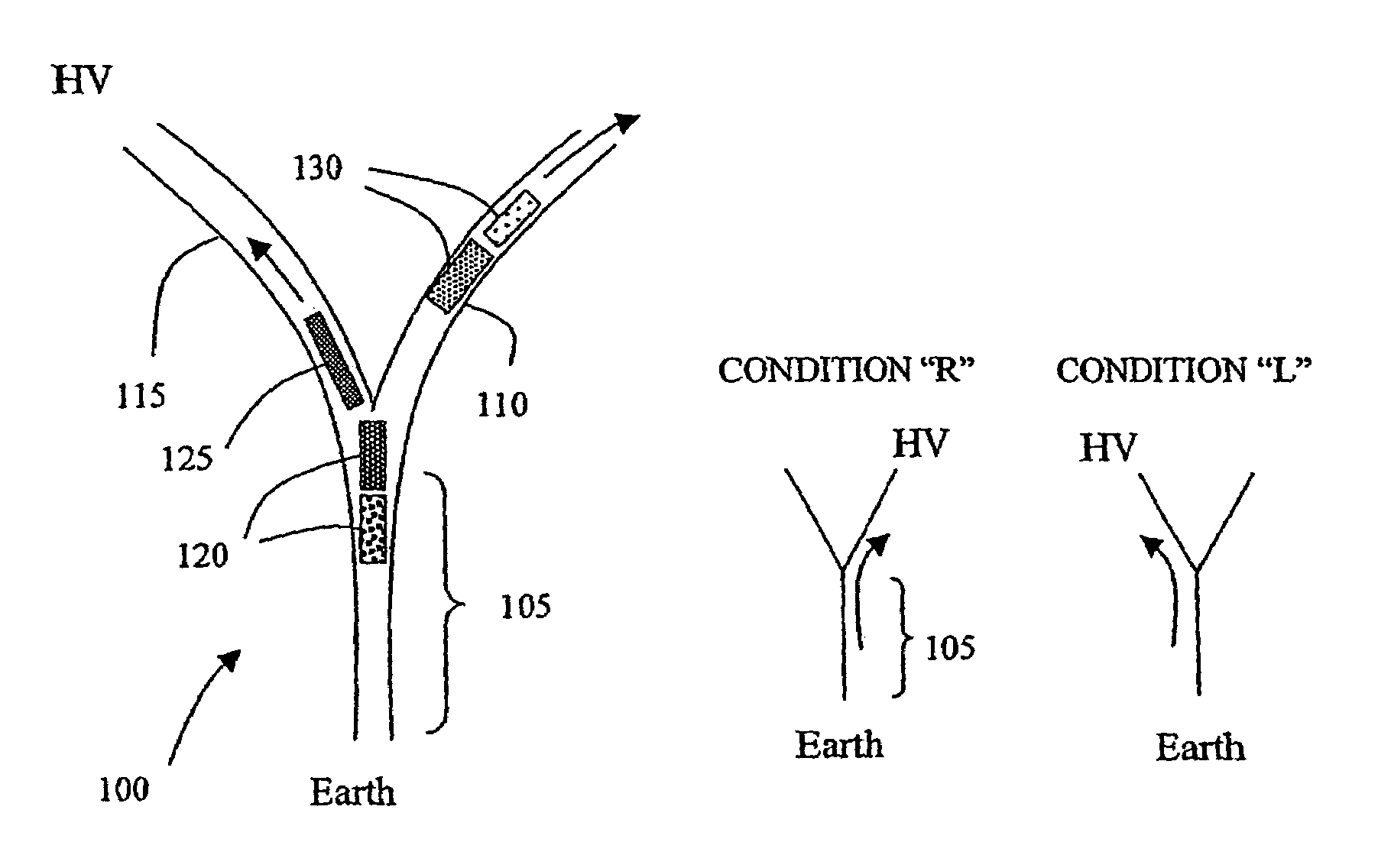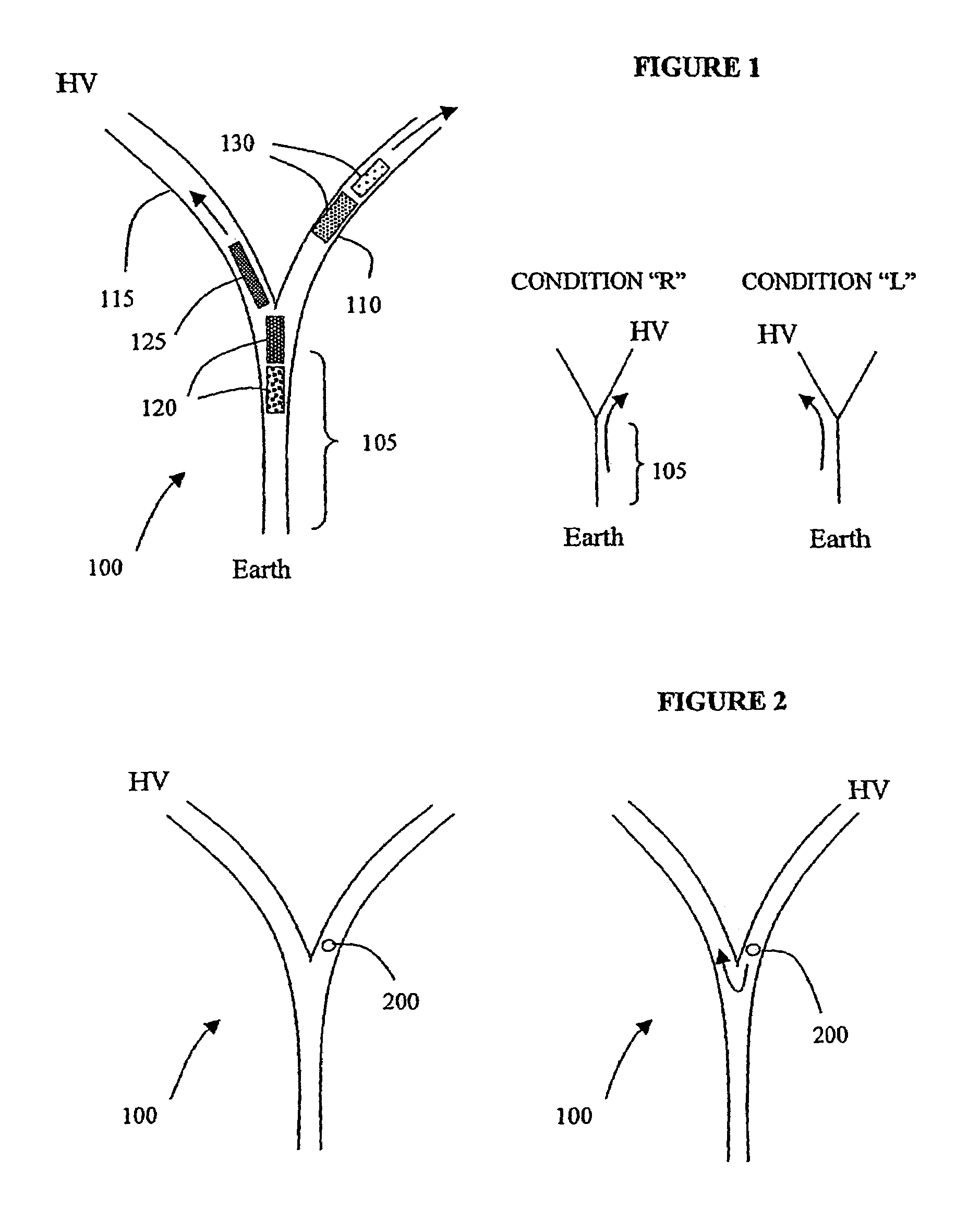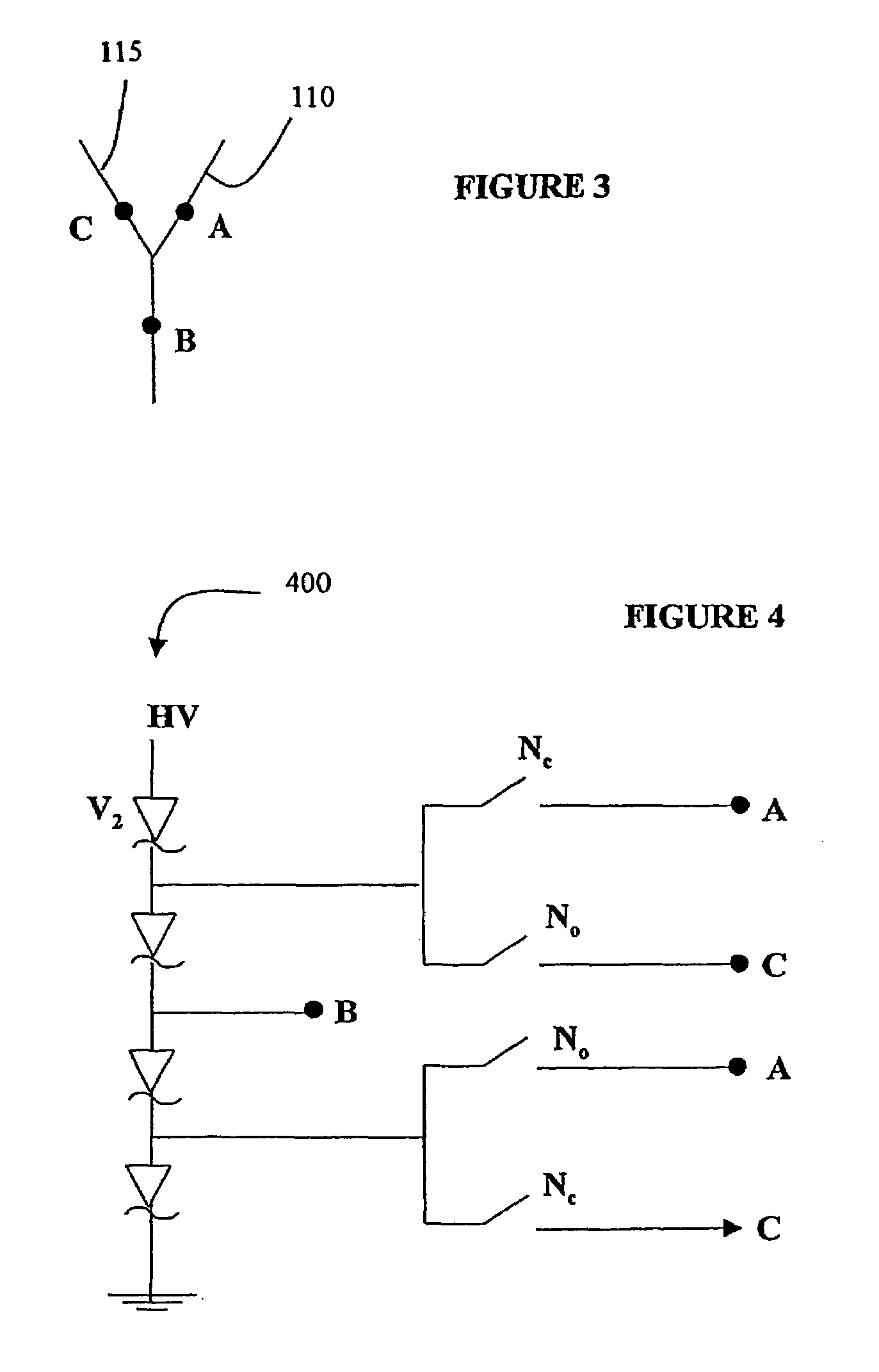Material separation device
- Summary
- Abstract
- Description
- Claims
- Application Information
AI Technical Summary
Benefits of technology
Problems solved by technology
Method used
Image
Examples
Embodiment Construction
[0030]In electrophoresis, charged particles such as biomolecules move through a medium along a channel under the influence of an applied electric field. The channel can for instance be microfabricated on a chip, or might be a branched capillary tube. A voltage difference is applied between the ends of the channel. Charged particles inserted into the channel at one end (determined by the direction of the voltage difference and the effective charge of the particles) will move to the other end of the channel under the influence of the electric field. Particles having different characteristics move along the channel at different rates and thus mixed particles will separate into different groups as they move along the channel. It is useful to be able to collect one or more separated groups of particles and this can be accomplished by using a channel with multiple branches and by switching the flow of particles among the different branches in a timed fashion. One possible configuration of...
PUM
| Property | Measurement | Unit |
|---|---|---|
| Flow rate | aaaaa | aaaaa |
| Polarity | aaaaa | aaaaa |
| Electric potential / voltage | aaaaa | aaaaa |
Abstract
Description
Claims
Application Information
 Login to View More
Login to View More - R&D
- Intellectual Property
- Life Sciences
- Materials
- Tech Scout
- Unparalleled Data Quality
- Higher Quality Content
- 60% Fewer Hallucinations
Browse by: Latest US Patents, China's latest patents, Technical Efficacy Thesaurus, Application Domain, Technology Topic, Popular Technical Reports.
© 2025 PatSnap. All rights reserved.Legal|Privacy policy|Modern Slavery Act Transparency Statement|Sitemap|About US| Contact US: help@patsnap.com



